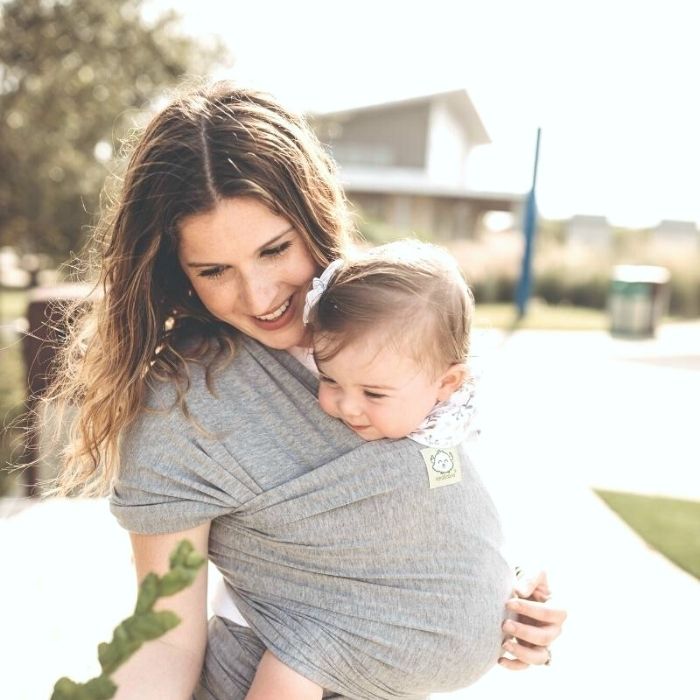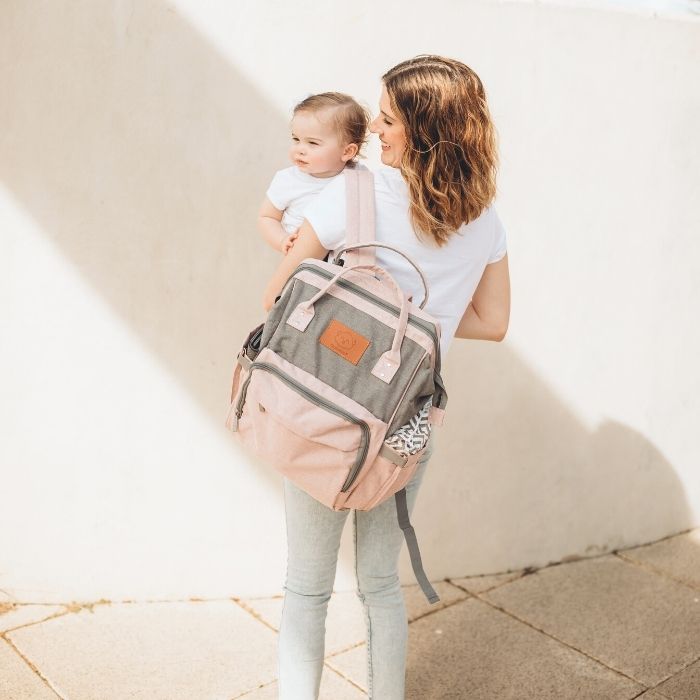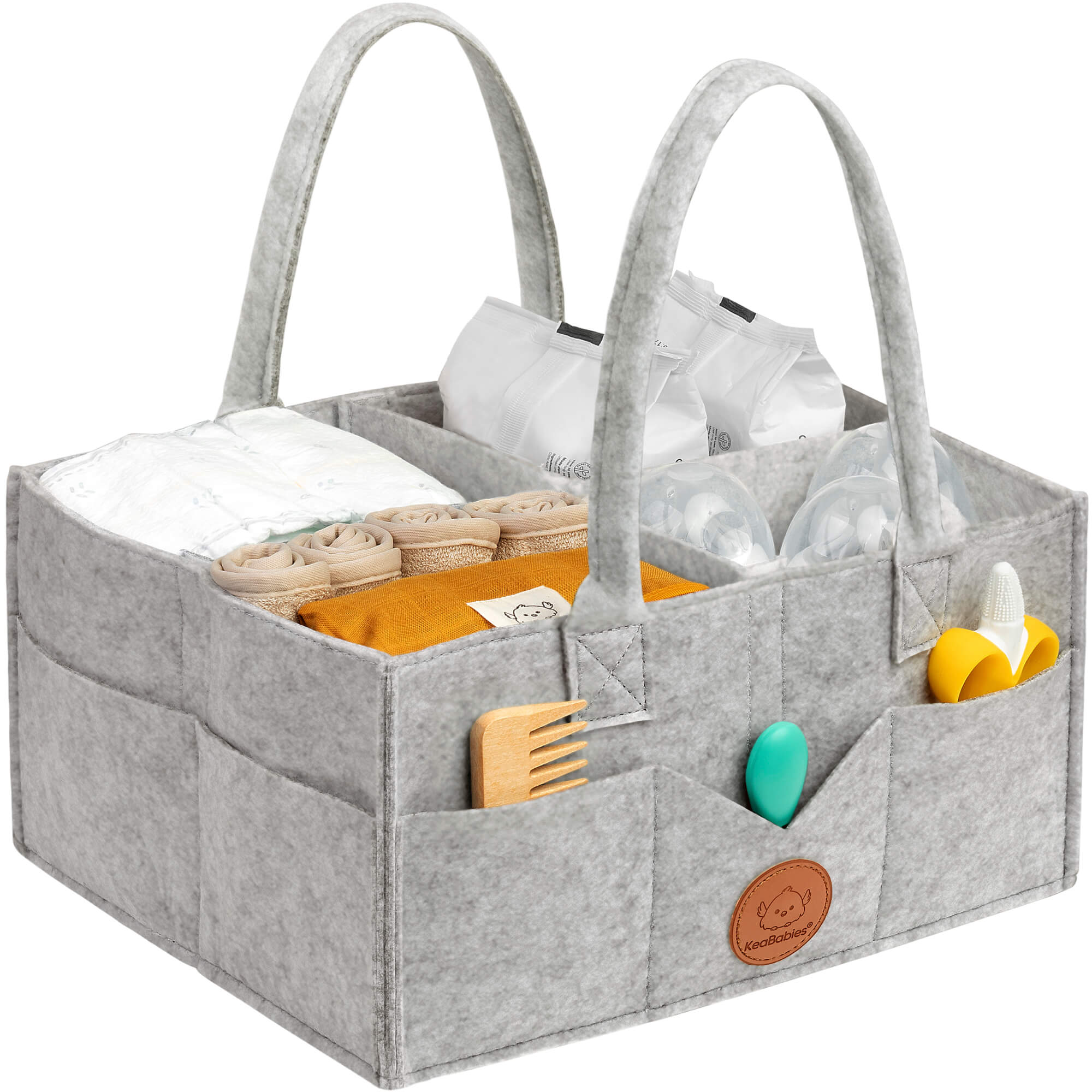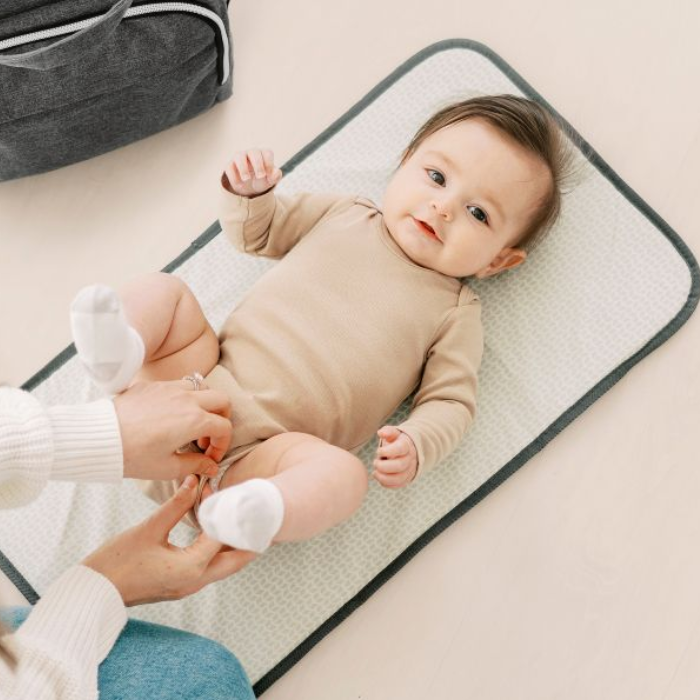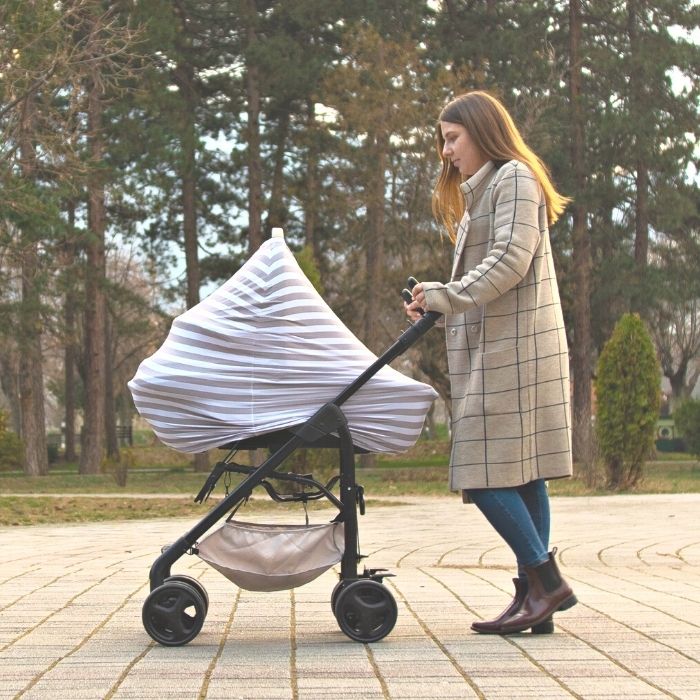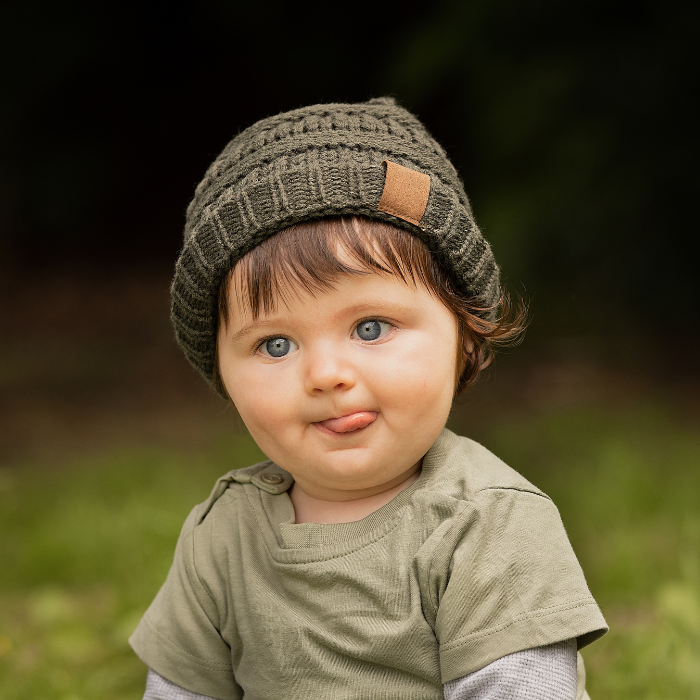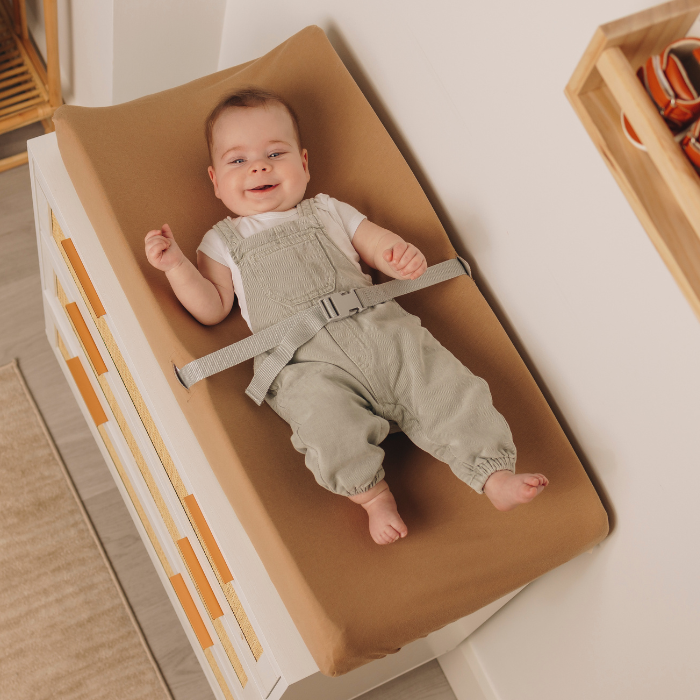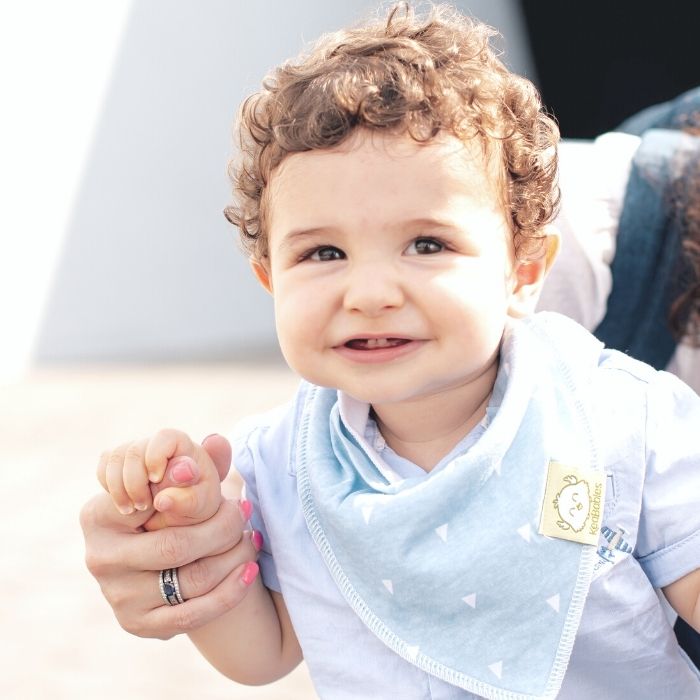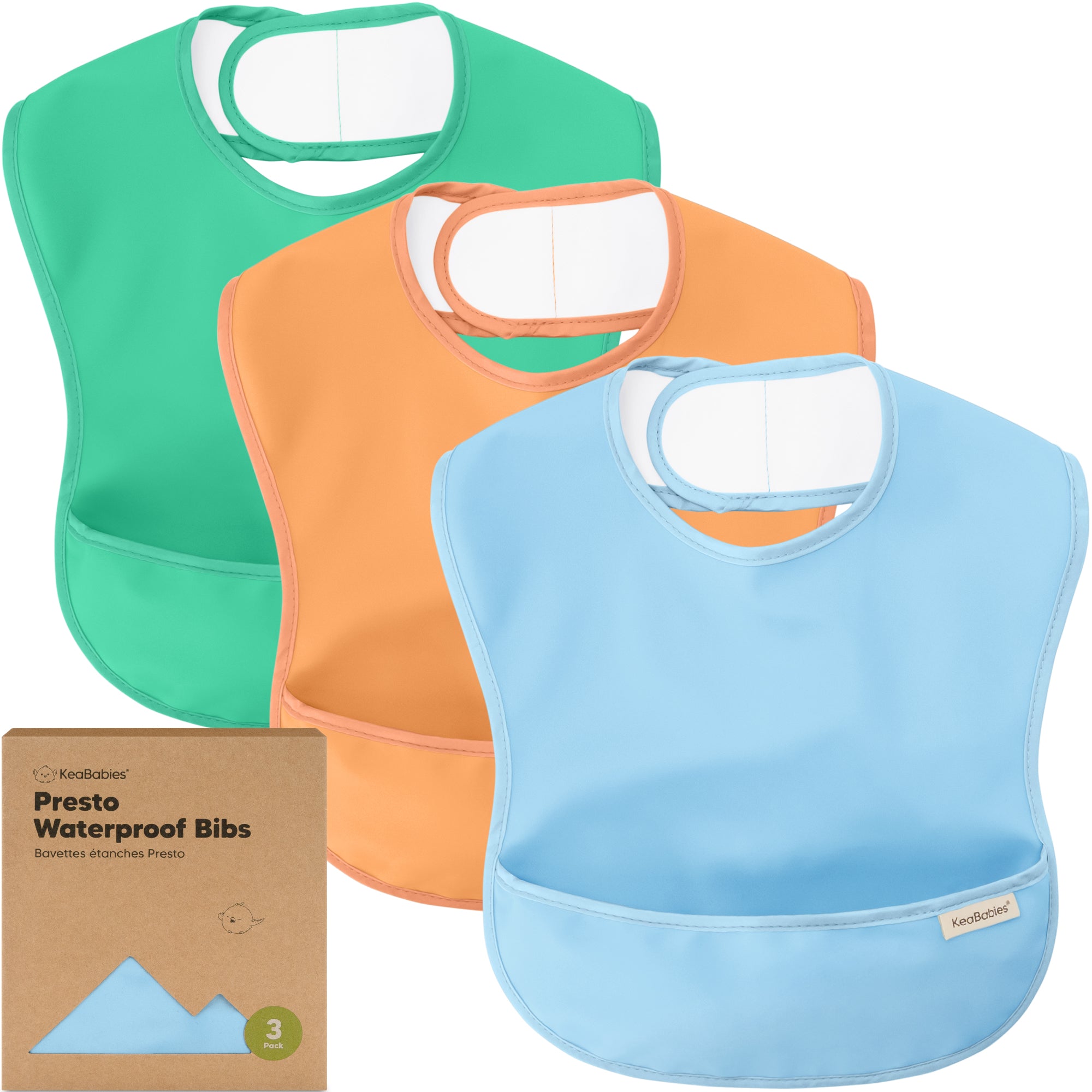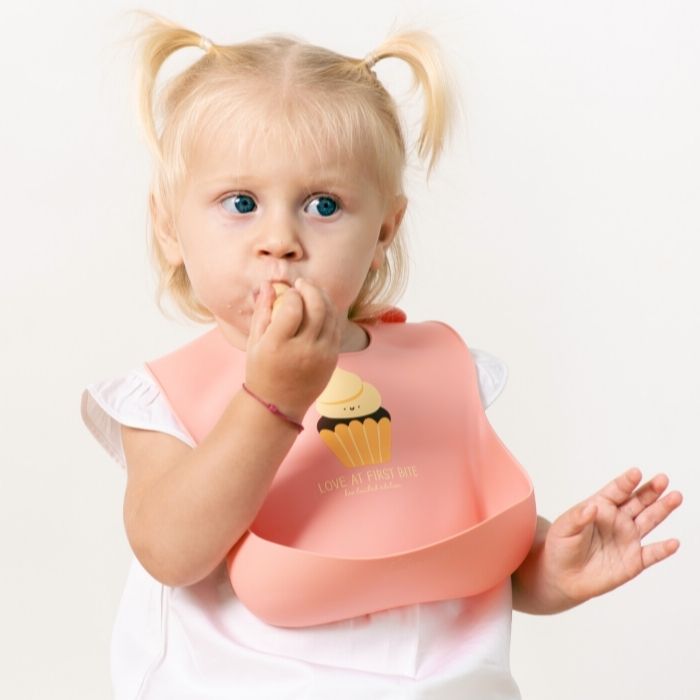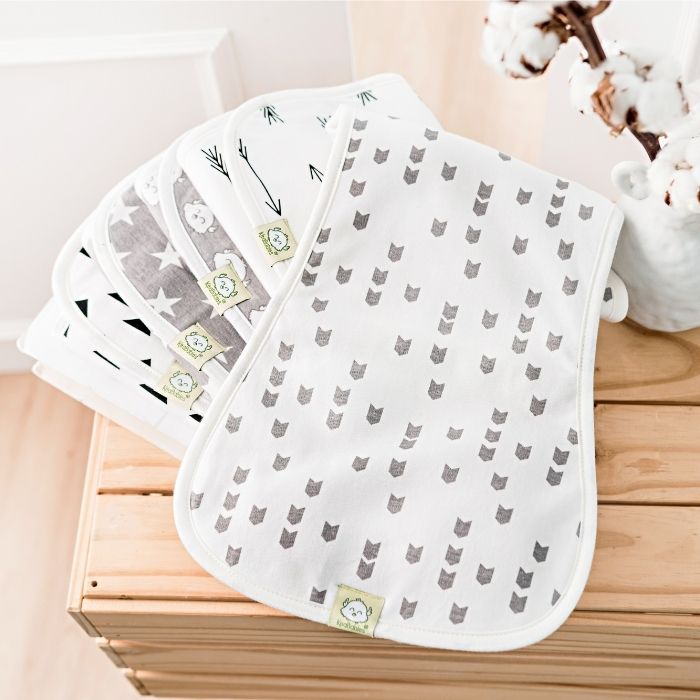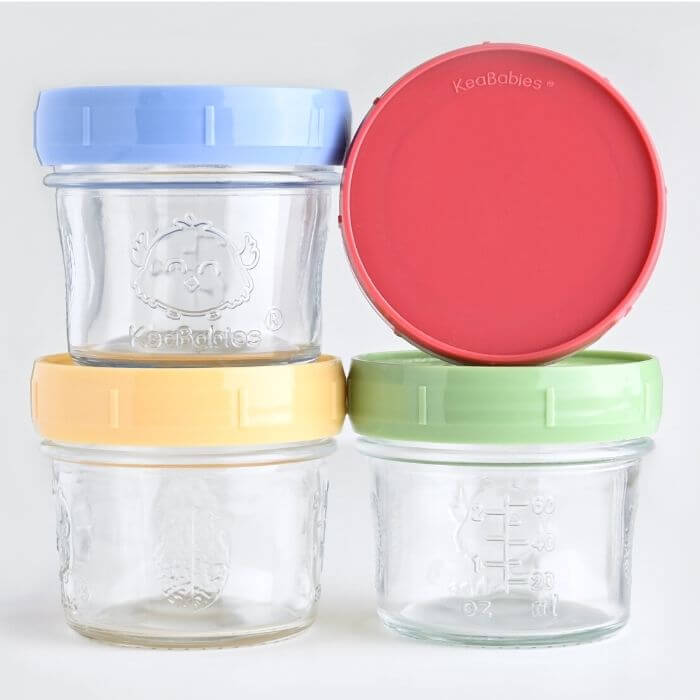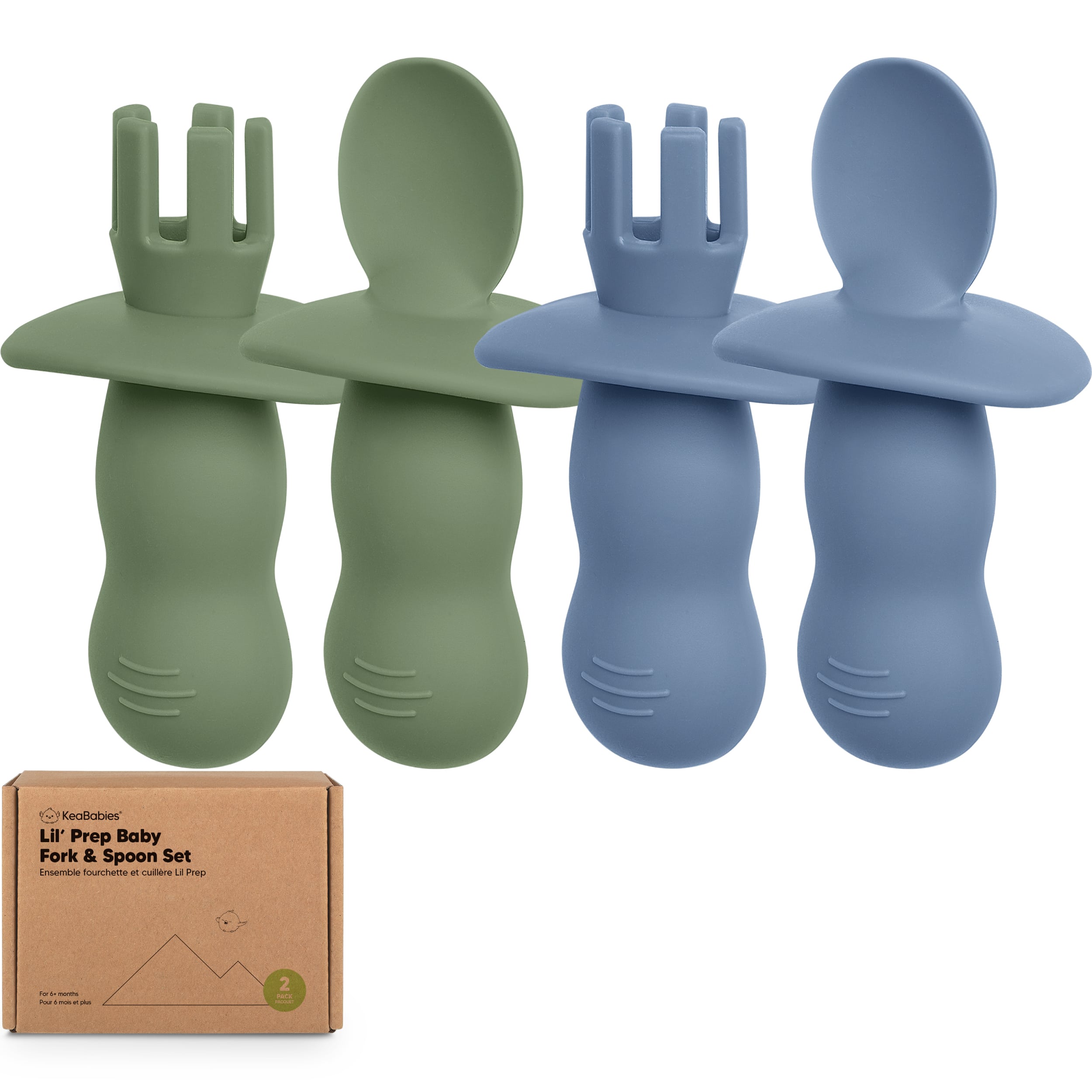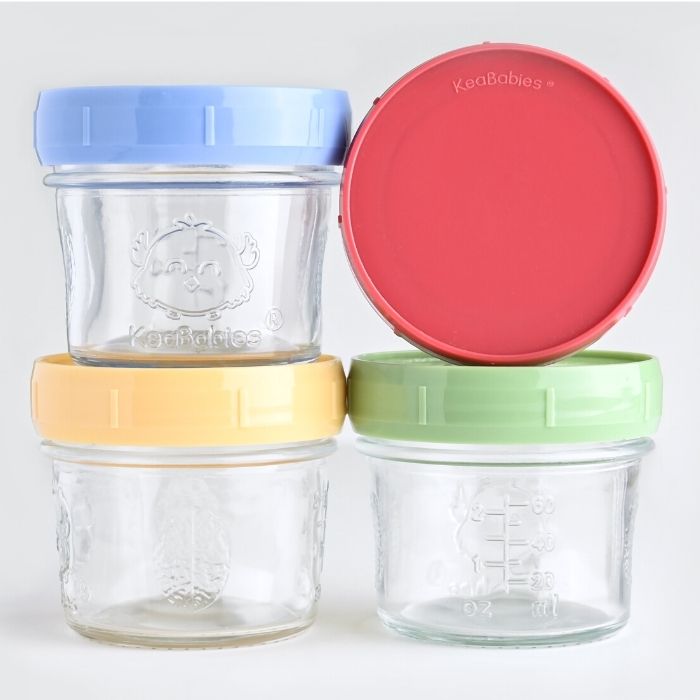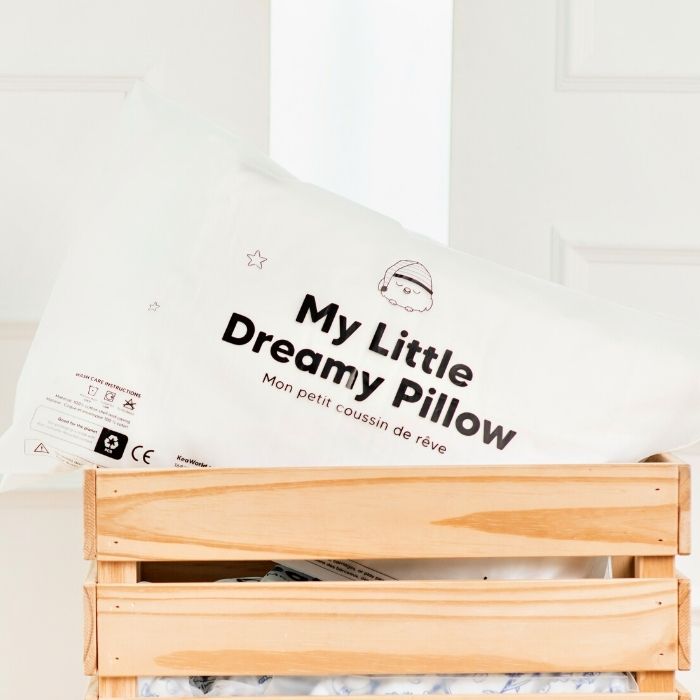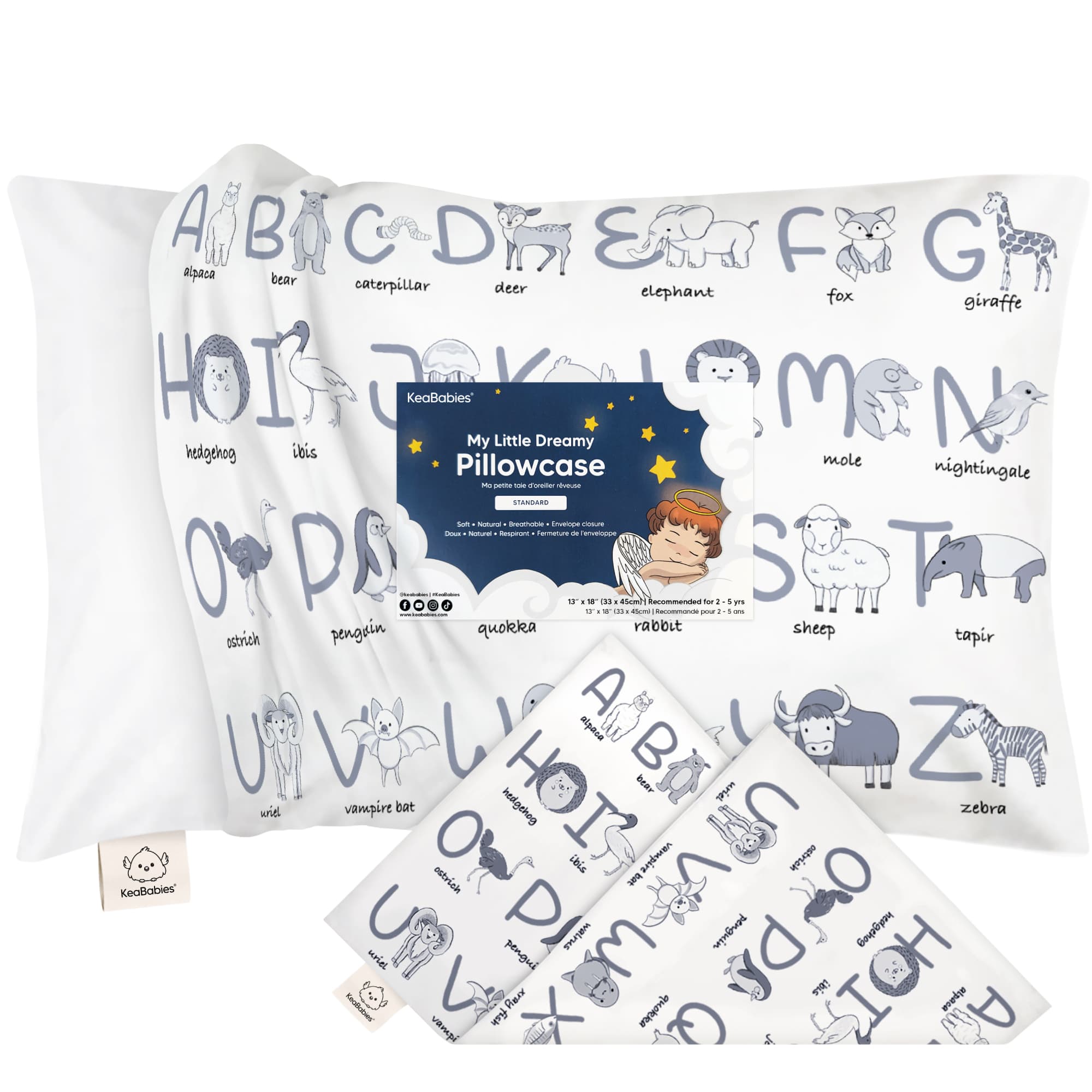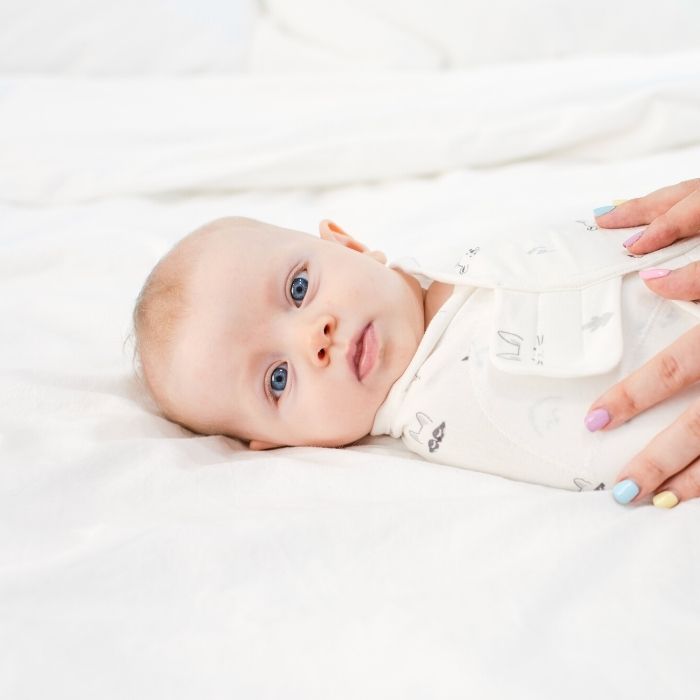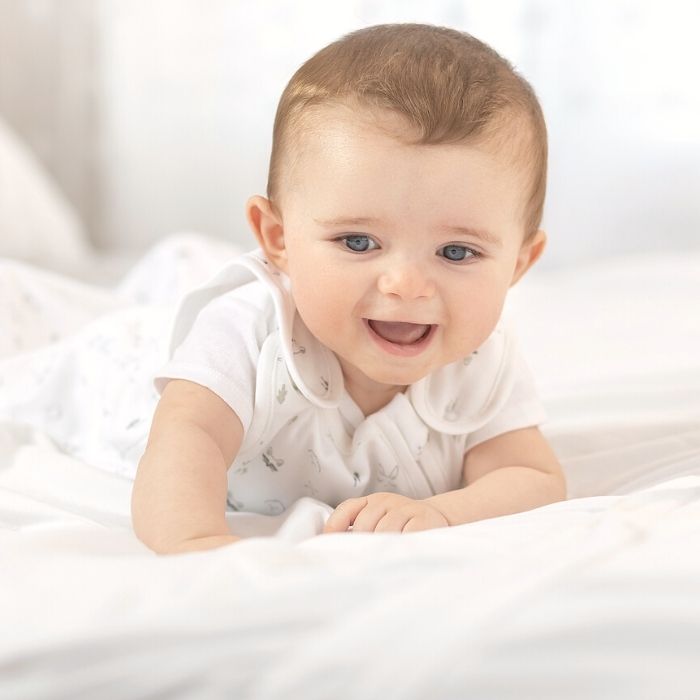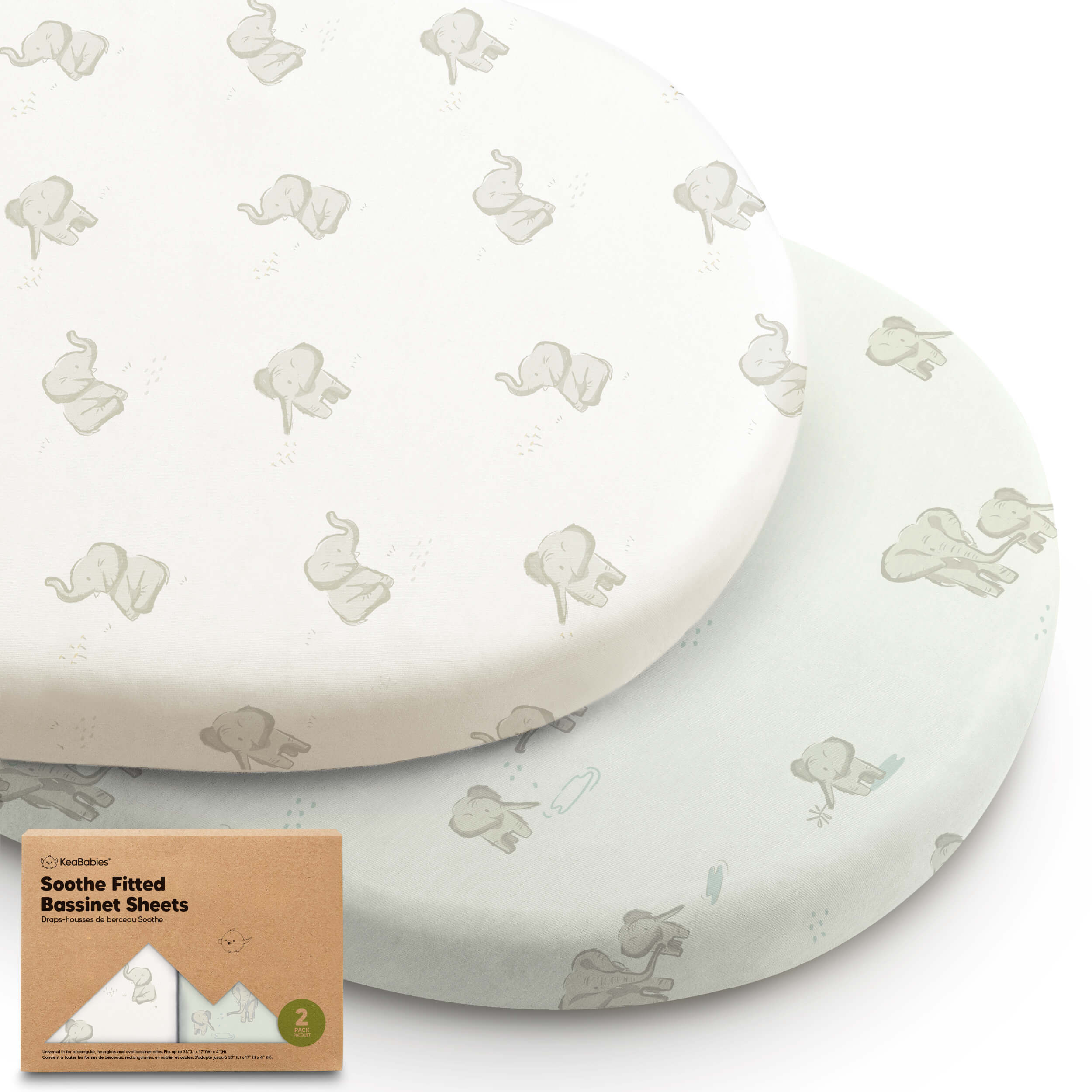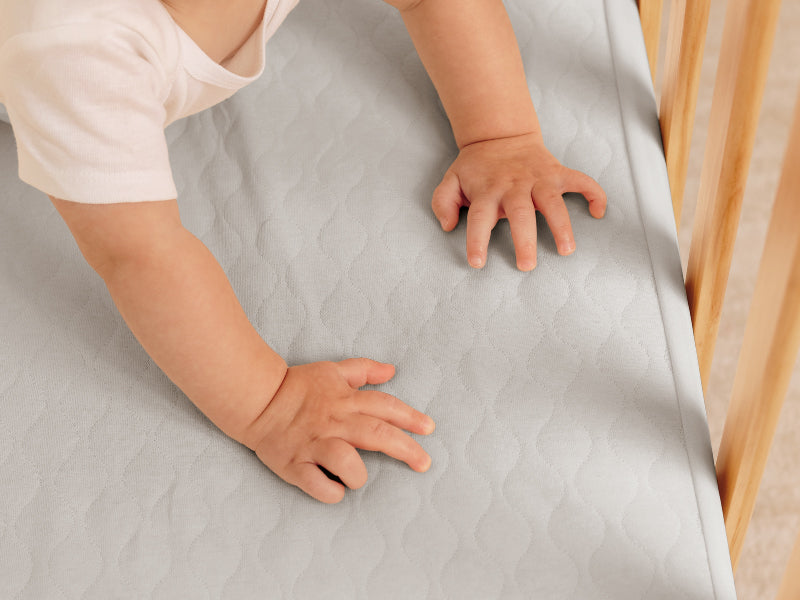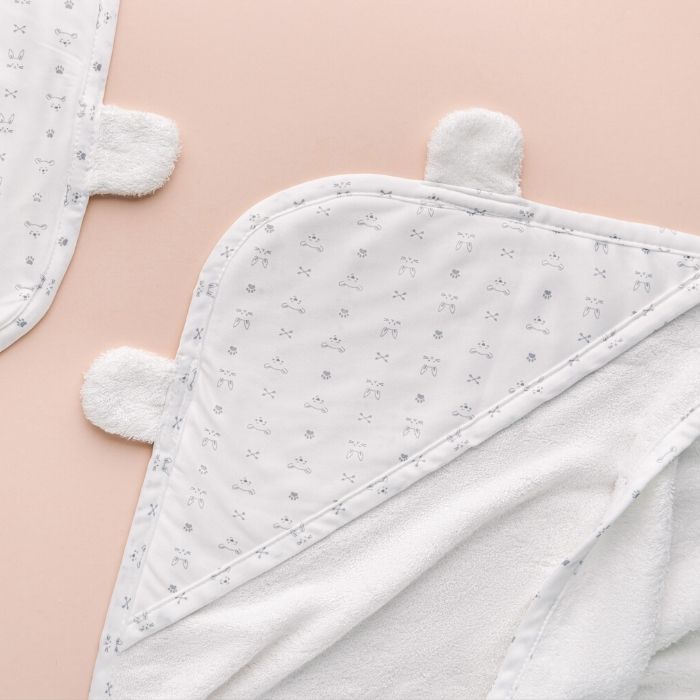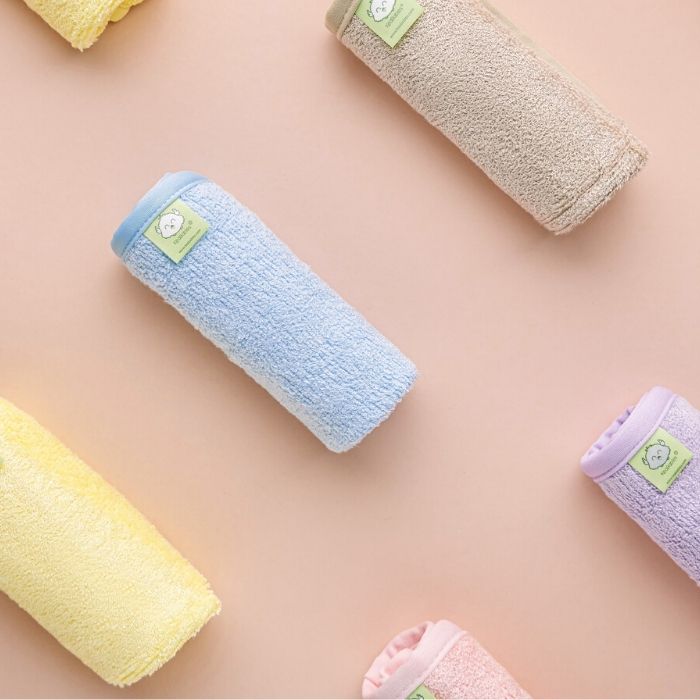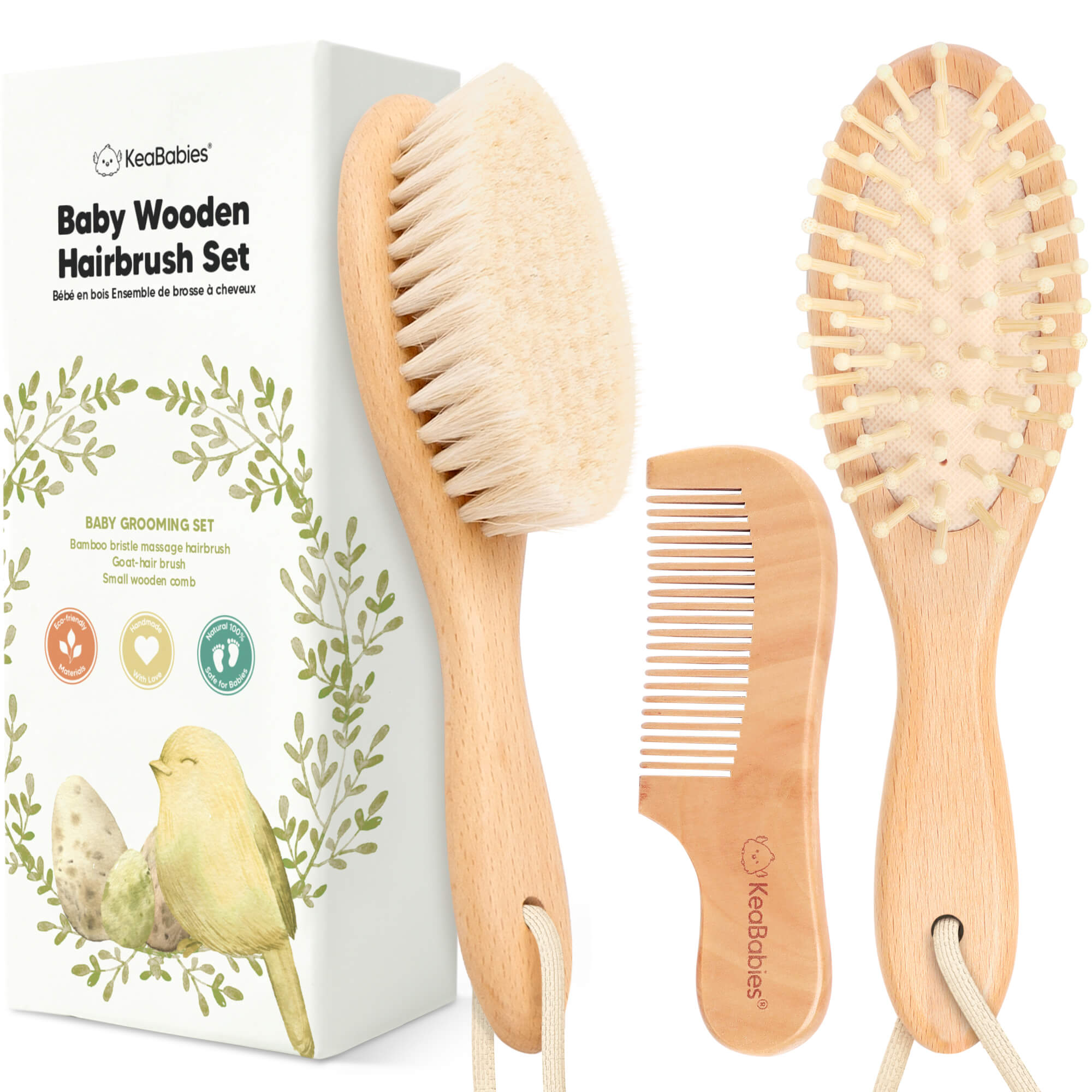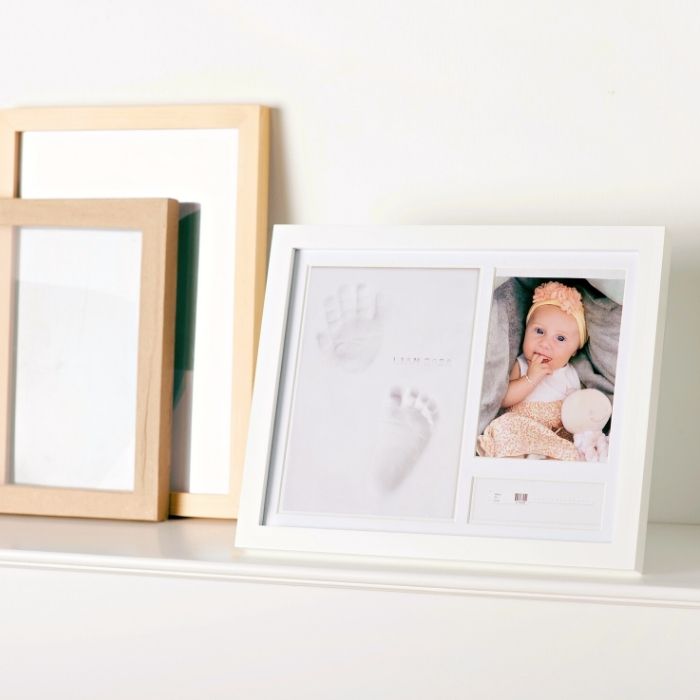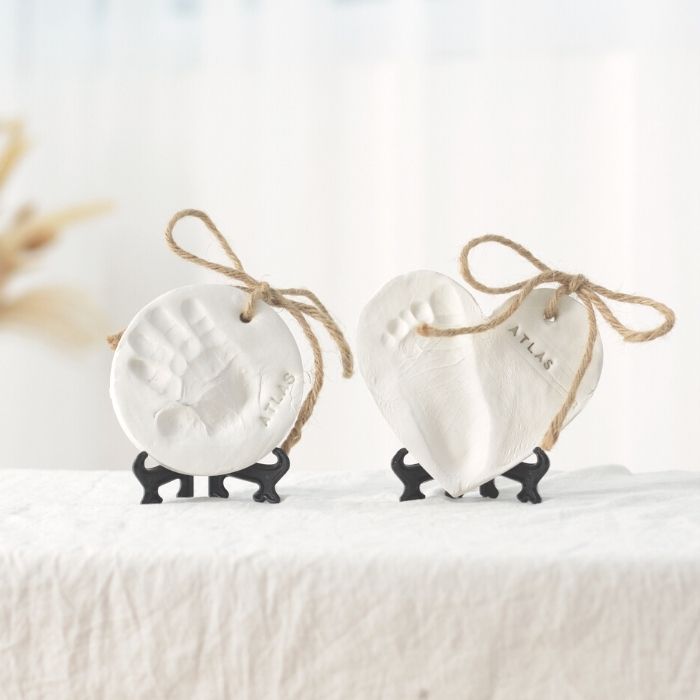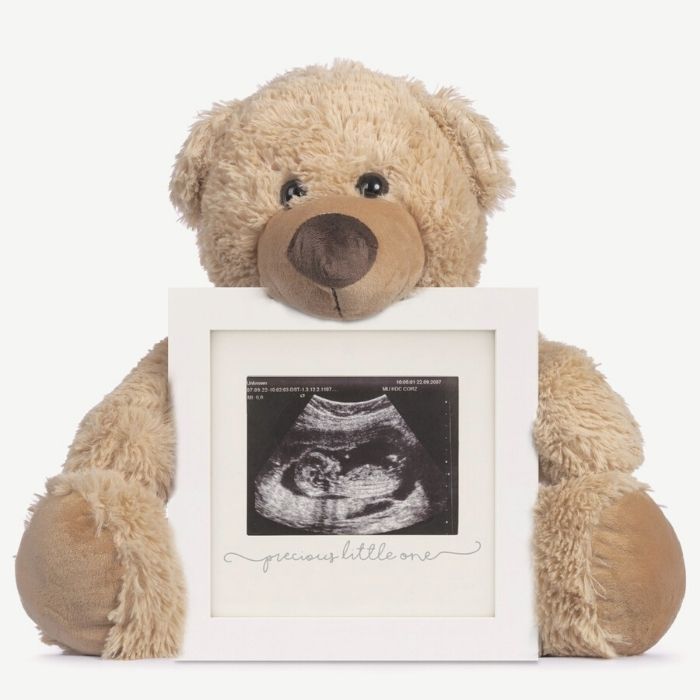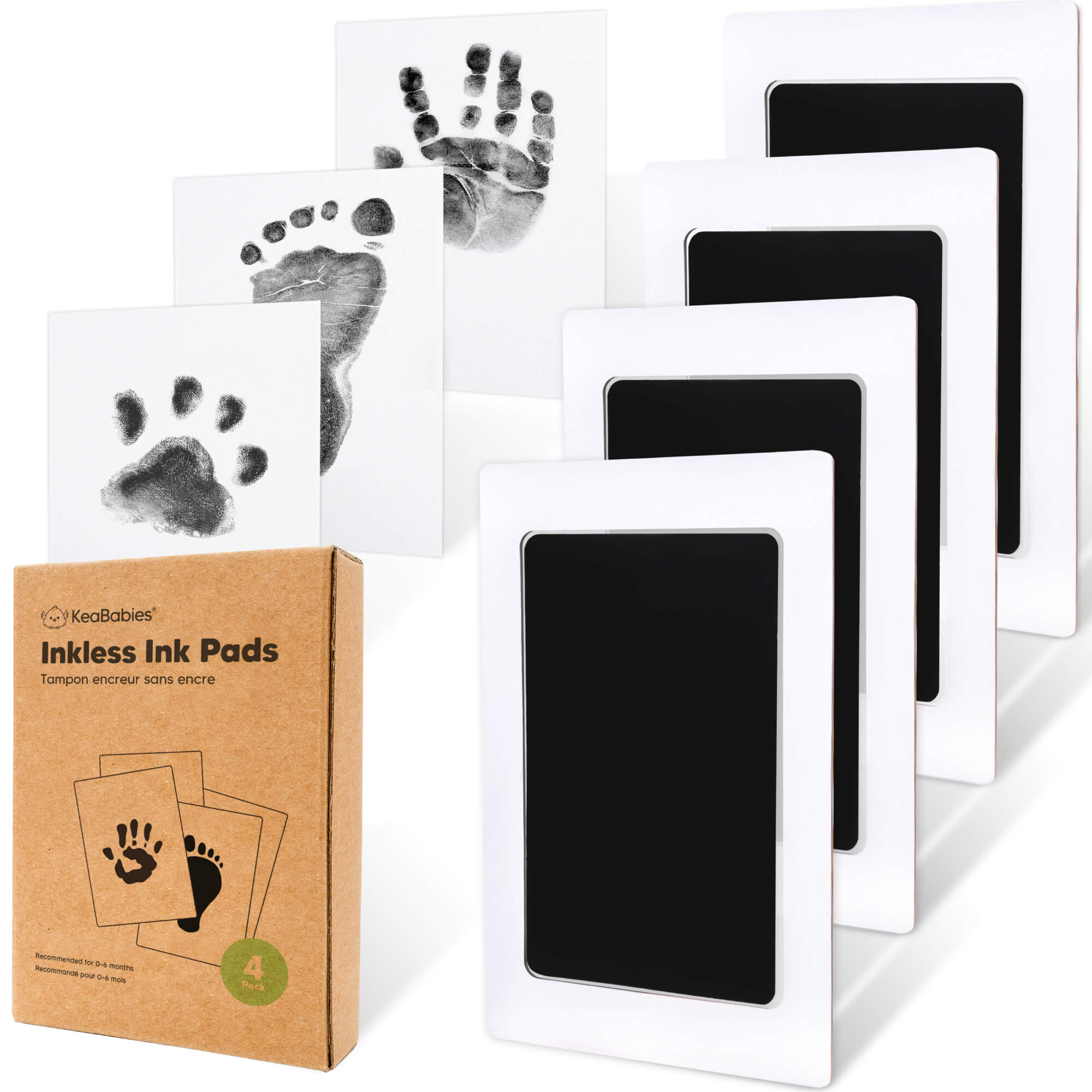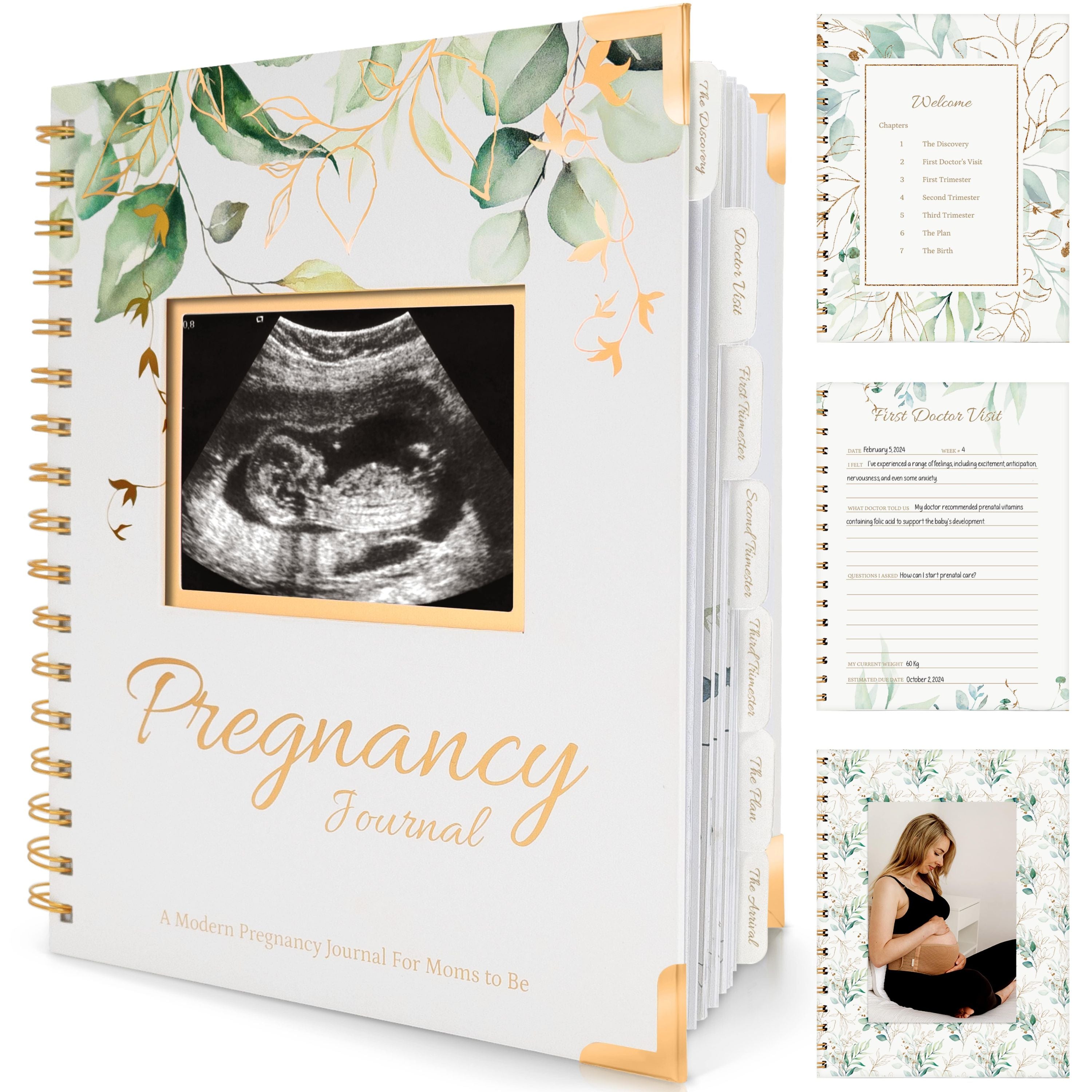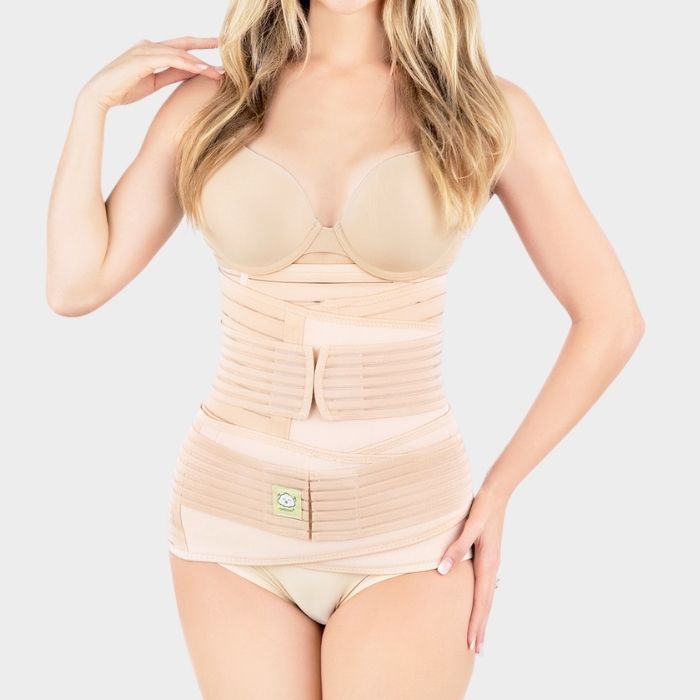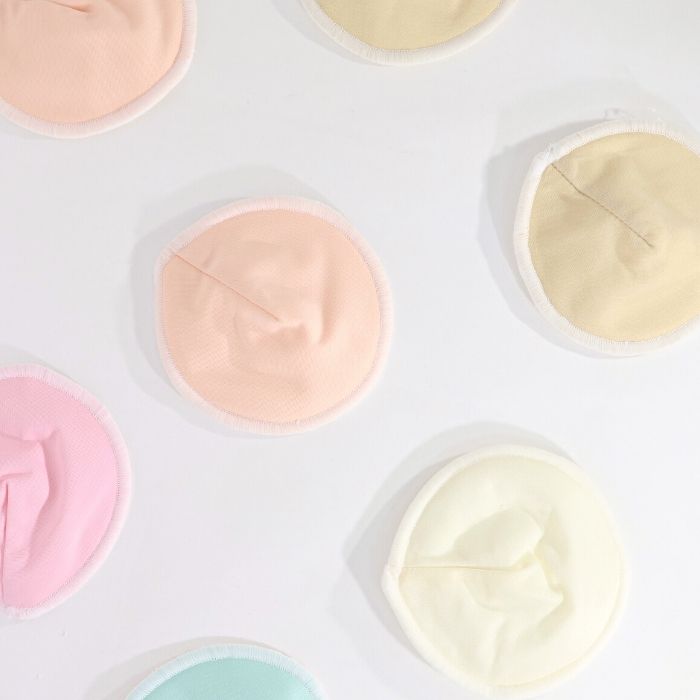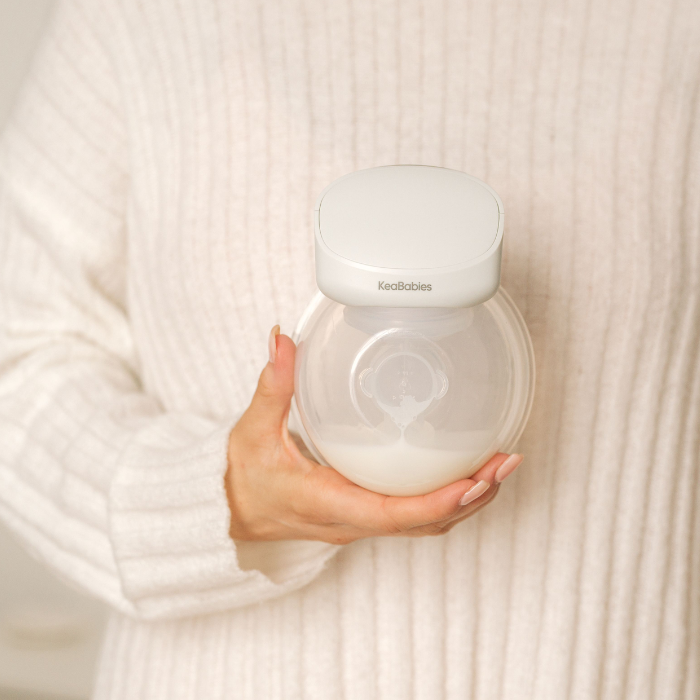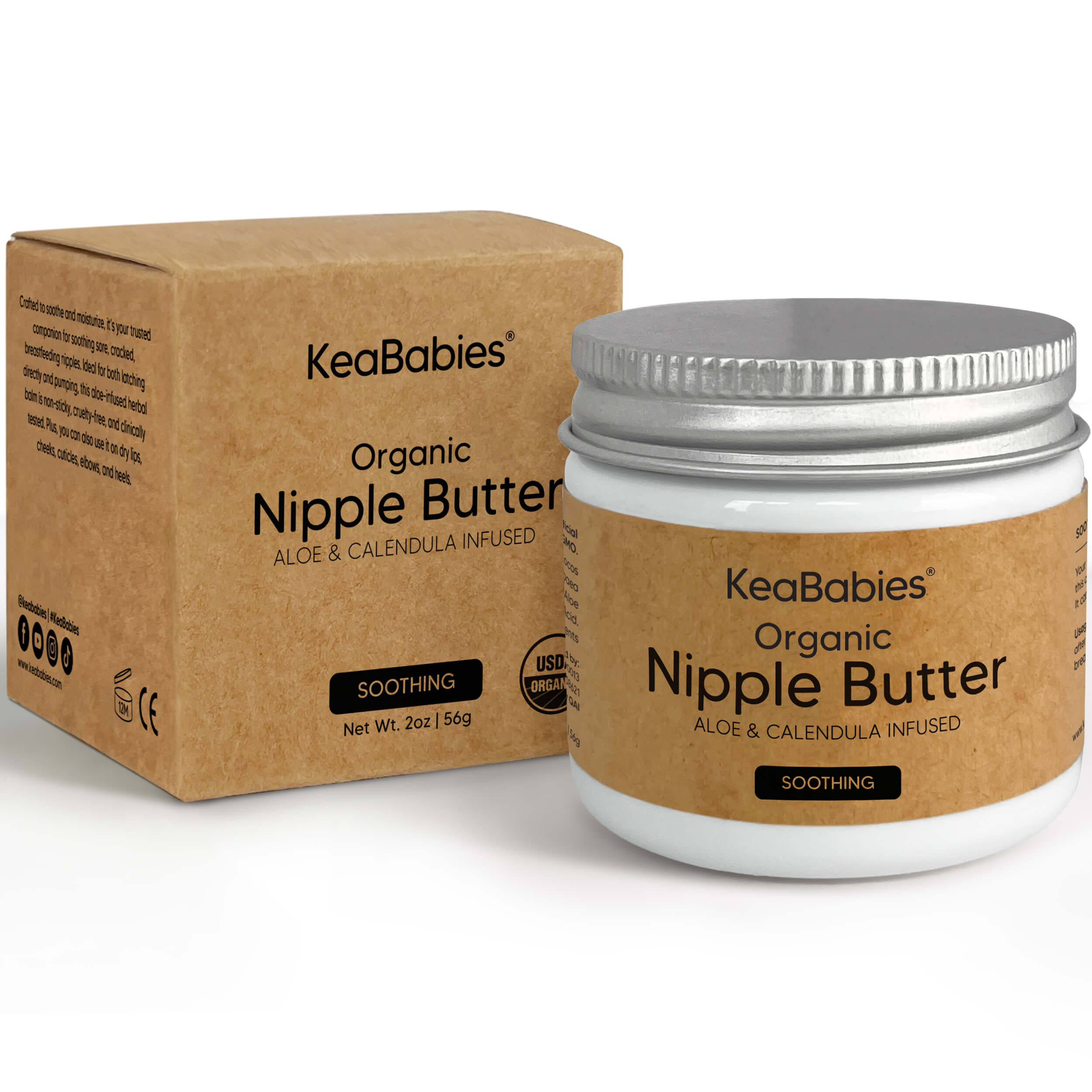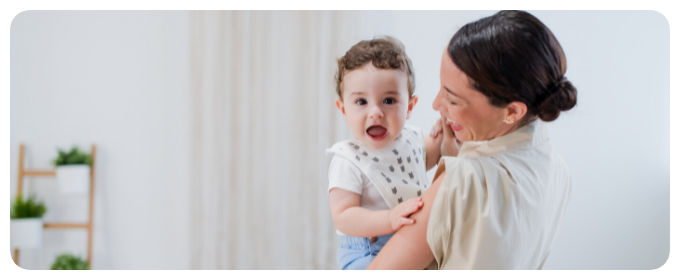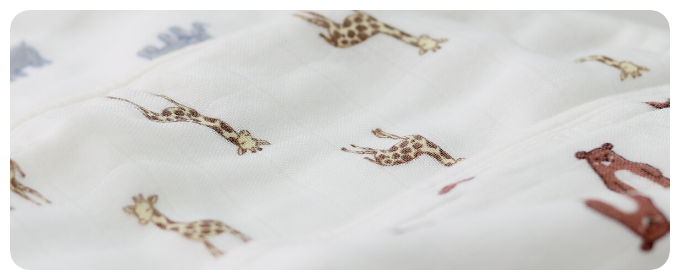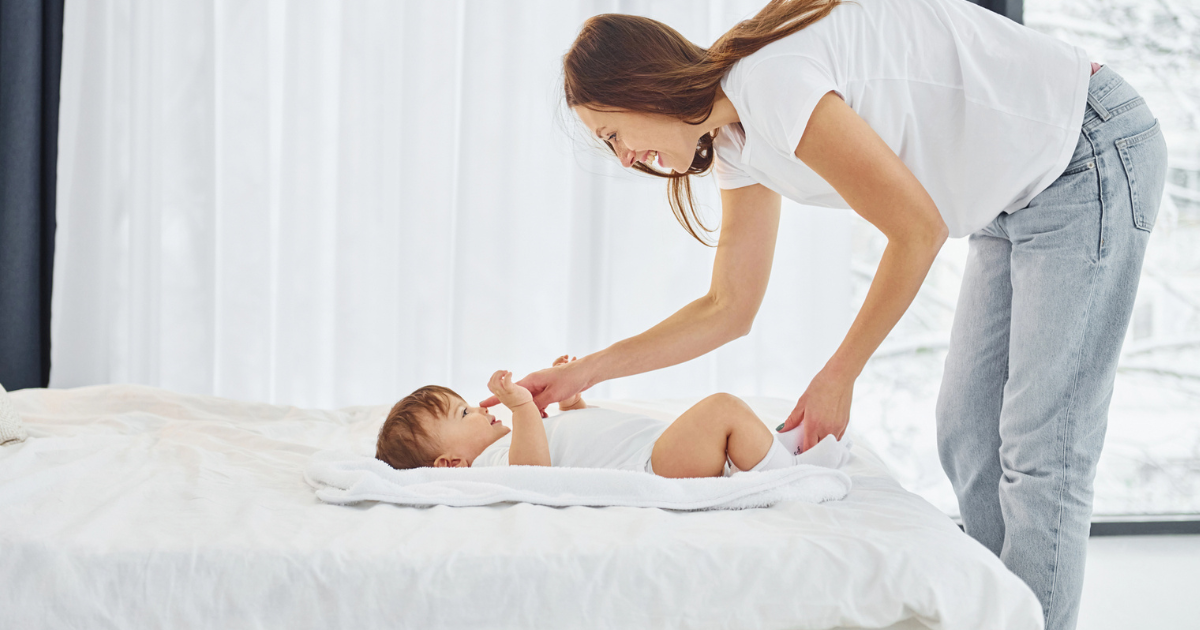
How To Tell The Difference Between Heat Rash And Yeast Infection In Baby
Go away, pesky rashes! During these warm summer months, parents might worry about what is a common rash and what warrants a doctor visit. Read on to discover everything you need to know about keeping your baby healthy this season!
We're in the midst of the warm summer months, and you might find yourself noticing red patches in your baby's neck, body, or skin folds. Understanding the differences between rashes caused by heat, and yeast infections is important for worried parents!
New moms can feel confident recognizing the signs and knowing when to seek help. By using gentle care methods and breathable, soft fabrics or soothing baby skincare products, overwhelmed parents can rest assured that they are taking good care of their baby's sensitive skin all summer long.
Introduction to Common Rashes and Baby Skin Conditions
Babies have delicate, sensitive skin that can be easily affected by a variety of rashes and skin conditions. As a parent, it’s normal to feel concerned when you notice redness, bumps, or irritation on your baby’s skin. Understanding the most common types of rashes—like diaper rash, yeast infections, heat rash, and atopic dermatitis - can help you respond quickly and confidently when issues arise!
Diaper rash is one of the most frequent skin conditions that affect babies, often caused by prolonged contact with a wet or soiled diaper. Yeast infections, especially yeast diaper rash, can develop in the warm, moist skin folds of the diaper area, particularly after antibiotic use or during humid weather. Heat rash, also known as prickly heat, is another common culprit, especially in hot weather. Atopic dermatitis, or eczema, can also affect babies, causing dry, itchy patches that may appear anywhere on the body.
While these rashes can look scary, most are easily managed at home with gentle care, frequent diaper changes, and the use of mild soap and diaper rash cream. Recognizing the signs of each skin condition and knowing when to seek medical attention can help keep your baby’s skin healthy and comfortable. Let's take a closer look at each of these common rashes and what you can do to prevent and treat them.
Introduction to Common Rashes
Babies have delicate, sensitive skin that can be easily affected by a variety of rashes and skin conditions. As a parent, it’s natural to feel concerned when you notice redness or irritation on your baby, but you can easily learn to recognize the differences.
Diaper rash is one of the most frequent skin conditions that affect babies, often caused by prolonged contact with a wet or soiled diaper. Yeast infections, especially yeast diaper rash, can develop in the warm, moist skin folds of the diaper area, particularly after antibiotic use or during humid weather. Heat rash, also known as prickly heat, is another common culprit, especially in hot weather when sweat glands become blocked, leading to clusters of red bumps and discomfort. Atopic dermatitis (eczema) can also affect babies, causing dry, itchy patches that may appear anywhere on the body.
While these rashes can look alarming, most are easily treated at home with gentle care, frequent diaper changes, and the use of mild soap and diaper rash cream.
Common Rashes:
How do you know if you're dealing with a diaper rash, yeast rash, dry skin, eczema, or a rash caused by heat? These are four common rashes all parents should be able to recognize in kids.
Eczema
Do you see some redness on your baby's neck, shoulders, or arms?
Eczema (atopic dermatitis) rashes often consist of dry, scaly patches that cause your little one's skin to itch. It can appear anywhere on the body, even the diaper area. Some tips to avoid eczema breakouts include using fragrance-free and dye-free products on your child, especially when it comes to diapers, baby wipes, soaps, moisturizers, and detergents.
Using thick creams or ointments after bath time can be helpful in preventing future flare ups. Keeping the skin dry can also help. If it doesn't clear up with home remedies, it might be helpful to go see a pediatrician or dermatologist.
Atopic dermatitis, commonly known as eczema, is a chronic skin condition that can affect babies as early as the first few months of life. It usually appears as dry, itchy, and inflamed patches on the face, arms, or legs, but can also show up in the diaper area. Babies with a family history of allergies or asthma are more likely to develop atopic dermatitis, but environmental triggers like heat, sweat, or certain soaps can also play a role.
Management starts with keeping your baby’s skin well-moisturized and avoiding known irritants. Using fragrance-free, gentle cleansers and applying a thick moisturizer after baths can help soothe affected skin. In some cases, your child’s doctor may recommend a topical corticosteroid or, for more severe forms, oral medications to control flare-ups and prevent bacterial infections. Use lightweight, breathable fabrics when bathing like these washcloths or these bath towels that are ultra-soft and luxurious. It’s important to monitor your baby’s skin for signs of infection, such as increased redness, oozing, or pain, and seek medical attention if you notice these symptoms.
Heat rash
This type of is especially common in babies during hot weather or when they are overdressed. This skin condition is caused by blocked sweat glands and appears as tiny red bumps, often in areas where sweat gets trapped, like the neck, back, or diaper area. To treat heat rash, help your baby stay cool by removing excess clothing, using air conditioning or fans, and gently washing the skin with cool water. Avoid heavy creams or ointments that can block sweat glands. Most heat rashes go away on their own with these simple steps, but if the rash persists, consult your child’s doctor.
By staying alert to changes in your baby’s skin and practicing good hygiene, you can help prevent most rashes and keep your little one comfortable. If you ever have concerns about a rash or if the condition gets worse, don’t hesitate to reach out to your child’s doctor for guidance.
Diaper rash
Most diaper rashes can be cleared up with home treatment. It is important to change your baby's diapers frequently to help prevent diaper rash and yeast infections. You might notice it when you go to change your baby’s diapers. The rash is pink or red in color and can become more inflamed if your baby sits in a soiled diaper for a prolonged period of time, or their body heat makes them more sweaty. Diaper rash is very common; more than half of children between four and 15 months experience diaper rashes. It typically goes away with diaper cream applied to the skin with each diaper change. Be sure to put on diaper cream every time you give your baby a clean diaper! Diaper creams act as a barrier so that when they have wet diapers, it gives the skin a chance to heal.
In addition, many parents say that when they switch to using cloth diapers, the instances of diaper rash and yeast rash are minimal.
Yeast diaper rash
A diaper rash can become infected and form a yeast infection. Yeast infections can be caused by exposure to infected feces, which may lead to Candida overgrowth in the diaper area. You might notice little red or pink bumps (satellite lesions) around the edge of the diaper rash when you give your baby a new diaper. Parents can use over the counter antifungal cream to treat yeast rash at home. If it doesn’t clear up, you should see your child’s pediatrician for a physical exam to determine what type of rash you’re dealing with, and further options for how to treat it. Yeast rashes may require medical consultation and antifungal treatments if they do not improve with over-the-counter remedies. A yeast rash caused by bacterial infection will cause bumps that look like pimples in your baby’s diaper area. This usually calls for a prescription ointment to clear it up.
Diaper Rashes
Causes of Diaper Rashes
Diaper rashes can be caused by skin irritation or types of infections. When your baby is exposed to a wet or soiled diaper for long periods of time, it can lead to skin irritation and increase the risk of yeast or bacterial infection.
Other factors, such as sensitive skin, hot weather, or tight clothing, can also contribute to diaper rashes. This is why rashes are so common during the hot summer months, and it's important for parents to learn how to care for their baby's diaper area even during hot weather.
Changing diapers frequently and using mild soap can help prevent diaper rashes. Although diaper rashes do affect babies often, it's important to take special precautions not to do things that make the rash worse.
Diaper Rash Treatment and Prevention
Diaper rash treatment typically involves keeping your baby's body clean and dry, and applying a diaper rash cream, such as zinc oxide. Preventing diaper rashes can be affected by changing diapers frequently, using mild soap, and avoiding tight clothing.
As cute as they are, frequent bubble baths are notorious for causing rashes. Your baby or toddler may love to play in warm, soapy water, but prolonged periods of time sitting in soapy bubbles can also lead to infections.
Keeping the diaper area clean and dry can help prevent yeast or bacterial infections. Using a soft washcloth when cleaning skin can also help prevent diaper rashes and keep your baby clean and dry.
Yeast Diaper Rash
Sometimes a diaper rash is harder to clear up. Yeast diaper rash, or candida diaper dermatitis, is a type of diaper rash caused by yeast overgrowth in the skin folds. It can be triggered by many things, including a bacterial infection, antibiotic use, or a weakened immune system.
Yeast infections can start out looking like a normal diaper rash, and then get worse, causing red bumps, itching, and discomfort in the affected skin. Treatment for yeast diaper rash typically involves an antifungal cream and good hygiene practices.
Heat Rash
Heat rashes are clusters of bumps under the skin that look like pimples. They are basically blocked sweat glands, common during warmer weather. Thankfully, it is easy to treat by simply going inside and staying out the heat, avoiding direct sunlight by wearing a hat, and using breathable clothing or even cloth diapers during warm weather. If your little one gets a rash, you can do lukewarm baths, use gentle soap, gently pat dry the skin or air dry after bathing, and using aloe vera to soothe the skin. Try to avoid heavy ointments and creams, like petroleum jelly or mineral oil, when you treat rash in kids. These can make the condition worse.
Heat rash is a skin condition caused by blocked sweat glands. It tends to occur in hot weather or when a baby is overdressed.
Heat rash can cause red bumps, itching, and discomfort in the affected skin. In the baby's diaper area, it can look similar to a diaper rash, but heat rash often appears on other parts of the body like the arms, belly, back, neck, and legs.
Treatment for heat rash typically involves keeping the skin cool and dry, and avoiding further irritation. Make sure you change your baby's diapers more often when they're in warm weather and more prone to sweating and extra friction. You can also apply a protective ointment during each diaper change to act a a barrier.
What are Some Symptoms of a Yeast Infection?
A yeast infection can cause a range of symptoms, including red skin, itching, and discomfort in the affected area. Other small red spots may appear around the main rash area. This often occurs in the diaper area, but can appear on other parts of the body.
A yeast diaper rash has specific markers.
Yeast infections or a yeast diaper rash can cause a strong odor or discharge. If left untreated, yeast infections can lead to more severe complications, such as open sores, skin breaks, or even causing infection like a bacterial infection. It's important for parents to pay attention to their child's skin when they change diapers, during bath time, or when they get dressed.
When to See Your Child's Doctor
If your child's diaper rash, yeast rash, or any type of rash persists or worsens despite home treatment, it’s essential to see your child's doctor. A pediatrician can diagnose and treat yeast or bacterial infections, and provide guidance for parents on how to manage and prevent diaper rashes in the future.
In severe cases, medications may be prescribed to treat yeast or bacterial infections. When you treat the rash, give it a few weeks to heal. Seeking medical advice early on can help prevent complications and promote healthy skin for your little one!
Rashes should be the least of your problems this summer!
Diaper rash is a common condition affecting most babies at some point, and can be caused by skin irritation, yeast infection, or bacterial infection. Sometimes, children need prescription creams to heal pesky diaper rashes, especially when the diaper rash caused some type of infection. Heat rash is common during warm weather but is easy to treat at home. Thankfully, both a heat rash and a yeast diaper rash are relatively easy to treat, and by knowing the difference between the two, parents can rest assured their baby's skin will be well taken care of all summer long.
|
|
Meet Our KeaMommy Contributor: Kaitlyn Torrez I’m Kaitlyn Torrez, from the San Francisco Bay Area. I live with my husband and two children, Roman and Logan. I’m a former preschool teacher, currently enjoying being a stay at home mom. I love all things writing, coffee, and chocolate. In my free time, I enjoy reading, blogging, and working out. |

